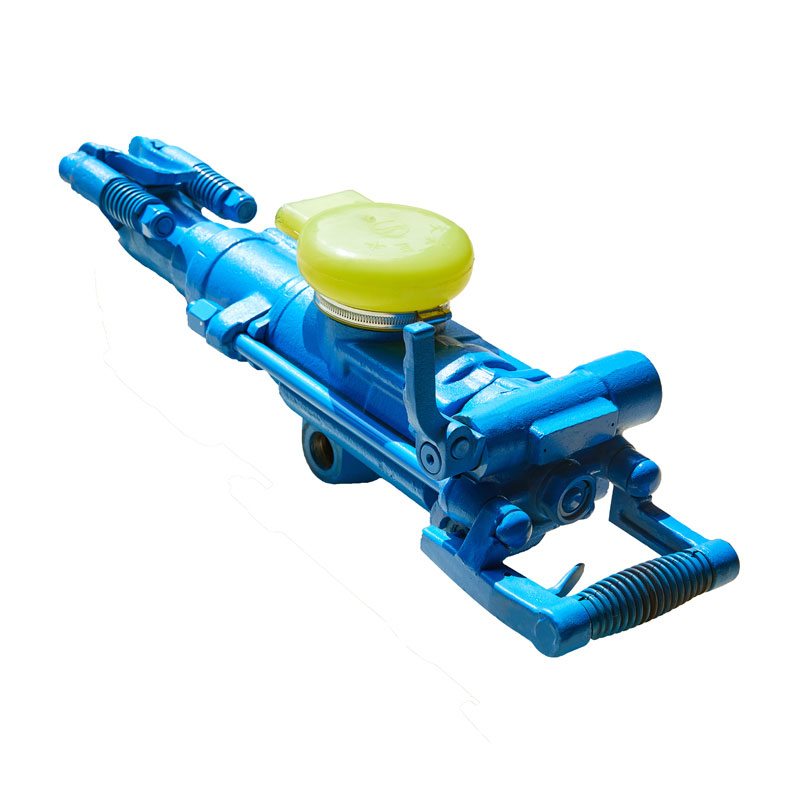Key features and considerations regarding handheld pneumatic rock drills
2024-04-18
A handheld pneumatic rock drill is a portable power tool designed for drilling holes in hard materials such as rock, concrete, and masonry. It utilizes compressed air as its power source to drive a percussive mechanism, typically a piston or hammer, which delivers rapid blows to the drill bit, allowing it to penetrate the material. Here are some key features and considerations regarding handheld pneumatic rock drills:
1. Power Source: Pneumatic rock drills are powered by compressed air supplied by an external air compressor. The air compressor generates high-pressure air, which is delivered to the drill through a hose connected to the tool's air inlet.
2. Percussion Mechanism: The heart of a pneumatic rock drill is its percussion mechanism, which converts the energy of compressed air into rapid hammering or pounding action. This mechanism typically consists of a piston or hammer that strikes the back of the drill bit, transmitting impact energy to the material being drilled.
3. Drill Bits: Pneumatic rock drills use specialized drill bits designed for drilling into hard materials. These drill bits may have tungsten carbide inserts or hardened steel tips to withstand the abrasive and high-impact conditions encountered during drilling.
4. Handle and Controls: Handheld pneumatic rock drills are equipped with handles and controls designed for operator comfort and ease of use. These typically include a trigger or throttle for controlling the tool's operation, as well as ergonomic handles for gripping and maneuvering the drill during use.
5. Safety Features: Safety is paramount when operating pneumatic rock drills, especially in hazardous environments such as mines, quarries, and construction sites. Common safety features include hand guards to protect the operator's hands from flying debris, as well as safety interlocks to prevent accidental operation.
6. Applications: Pneumatic rock drills are used in various industries and applications where drilling into hard materials is required. Common applications include mining, quarrying, construction, demolition, and geotechnical engineering. They are used for tasks such as drilling blast holes, anchor holes, exploration drilling, and rock bolting.
7. Maintenance: Like all power tools, pneumatic rock drills require regular maintenance to ensure optimal performance and longevity. This may include lubrication of moving parts, inspection and replacement of worn components, and cleaning and servicing of the air intake and exhaust ports.
8. Size and Weight: Handheld pneumatic rock drills come in various sizes and configurations to suit different applications and operator preferences. They range from lightweight and compact models for overhead drilling or confined spaces to larger, more powerful drills for heavy-duty drilling tasks.
Overall, handheld pneumatic rock drills are versatile and efficient tools for drilling into hard materials in a wide range of industrial and construction settings. Proper training, maintenance, and adherence to safety guidelines are essential for safe and effective operation.



